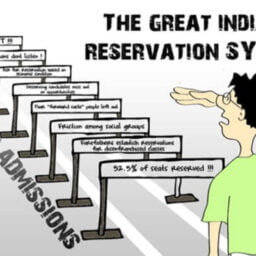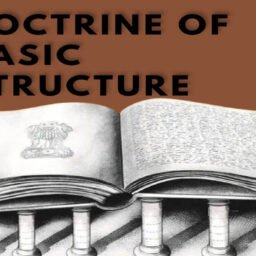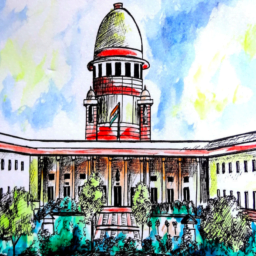INTRODUCTION
Menstruation, often known as periods, has remained taboo in Indian society. This subject is usually discussed behind closed doors, which stifles efforts to raise understanding about the menstrual cycle and reinforces women’s mistaken feelings of humiliation. In our society, the word “period” is still frowned upon. This subject is taboo to address in public, but why is that? It’s because women themselves don’t want to talk about it. Period, also known as menstruation, is a normal process that occurs every month in a woman’s body and is nothing to be ashamed of; all of this is simply to write down in words, but in practice, in India, it is not. To date, this has not been discussed yet. “Zomato, an Indian restaurant aggregation, and meal delivery startup took a step forward when they unveiled a new type of ‘leave’ termed ‘period leave,’ which a woman can take up to ten times per year. This drew a lot of positive and negative reactions on the internet. Some people were in favour of the move, while others were against it. In this essay, we’ll look at whether women’s menstrual leave is a breach of their right to equality.”[1]
CONSIDERATION OF MENSTRUAL LEAVE
In India, menstrual leave is both a crucial and underappreciated topic. Since 1992, Bihar has been the only state in India to provide two days of special leave to female employees every month. “The subject of menstruation leave recently attracted notice when Ninong Ering, an Arunachal Pradesh Lok Sabha member, introduced the bill for the period leave or for the benefit of the women at the time of menstruation which allows women to take two days leave as period leave and those leave will be paid in both gov. and private sectors. This law aims to bring relief for the women at their workplace by allowing them to take a two-day paid menstruation break each month and providing them with suitable workplace amenities. This bill aims to assist women in balancing their health needs and work obligations, not only for white or golden collar positions but also for blue-collar jobs, for those who cannot buy sanitary supplies. Every month a lot many countries give two days leave as a menstrual leave to women. During menstruation, most women experience discomfort, cramps, nausea, excessive bleeding, and other unpleasant symptoms. Women’s quality of life is significantly impacted by the discomfort and severe exhaustion they experience during menstruation. Premenstrual syndrome (PMS) has been shown in numerous studies to drastically affect women’s productivity at work. Dysmenorrhoea, or period cramps, is recognized by doctors all over the world as very terrible as cardiac arrest. However, some women don’t suffer from much pain or suffer from pain which is very normally bearable during menstruation and it is not fair for this type of woman to generalize their menstrual experience to the rest of the women. Menstrual leave is undoubtedly an egalitarian method because women are naturally different from men. Menstrual leave, on the other hand, is argued to be discriminatory because it allows female employees to take more time off than male employees. Even today, menstruation women face challenges such as a lack of quiet space at work to get their menstrual props changed, some space where they can rest and concern of discolouration and odour, and a lack of sanitary facilities. Working in cities often means crammed work and travel places, obstructing privacy and hygiene when changing and disposing of menstruation products. Women’s efficiency levels are decreased during menstruation, according to research. As a result, taking a leave during the menstrual cycle would have no impact on the organization’s production or the economy.”[2]
RIGHT TO EQUALITY
“This means that every Indian Citizen has the same legal rights. In India, there is no discrimination on the basis of religion, gender, caste, and many more which means that no one will get discriminated against on the basis of social class and will be treated equally. Article 14 states “The State shall not refuse to any individual within the territory of India, equality before the law or equal protection of the laws.” Article 14 does not imply that all laws must be uniform and apply to everyone. It only prohibits unjustified and individual distinctions made by bestowing rights or benefits on one group at the expense of others for no good reason. Equal protection of the laws must imply that all people in identical situations are protected by the same laws. The Supreme Court reaffirmed this principle in M.G. Badappanavar v. State of Karnataka AIR 2001 SC 260, saying, “Equality is a basic feature of the Constitution of India, and any treatment of equals unequally or unequal as equal will be a violation of the Constitution of India’s basic structure.”
The key points of the judgment are as follow:
(a) a law will remain constitutional even if there is only one person who can relate to the law. Then even only for the one person there will a different class.
(b) There is always a presumption in favour of the constitutionality of an enactment, and the burden will be on the shoulder of that person who challenges that his/her rights get violated. He/She must have to show that his rights get violated and he has not been treated equally Furthermore, the Supreme Court declared that “equality is a dynamic notion with various elements and dimensions that cannot be cribbed, cabined, and kept within old doctrinaire confines” in E.P Royappa v. State of Tamil Nadu. At this point, we must consider the other provisions that must be read in conjunction with Article 14 and cannot be considered a violation. Article 14 is a broad provision that must be interpreted in conjunction with the other provisions in the Part on Fundamental Right. Article 15 (3) gives the power to the government to establish specific measures for women and children to safeguard them from statutory equality controls. One might wonder why this legislation gives women and children carte blanche (complete freedom to do as they please) to impose differential benefits ostensibly to the benefit of women at the expense of men, but it is justified because it compensates for early injustice suffered by women and children at the hands of a male-dominated society. Some of the best examples of such laws include the right of children to get free and compulsory education to the below teenager children the Maternity Benefit Amendment Act 2017, the Sexual Harassment at Workplace Act, and others. As a result, any statute enacting special provisions for women (or children) under Art. 15 (3) cannot be challenged based on violating Art. 14 in Yusuf Abdul Aziz v. the State of Bombay.”[3]
CONCLUSION
The period is an unavoidable and painful monthly cycle which is called Menstruation too. Not all the women are same, Some women can bear the pain or they don’t have to suffer much but on the other hand, for some women, the menstruation pain is not at all bearable. So In comparison to this those women who have the capacity to bear this pain will take some advantage of the period leave. In such circumstances, precautions might be made to prevent the misuse of the information. Menstruation is a natural process, it is an inevitable process that naturally occurs and is not bearable for many women. Combining menstrual leaves with sickness leaves is inequitable. Menstruation is a neglected topic in India. The priority at the workplace used to give to men in comparison to women. Organizations must become more gender-inclusive for women to reach their full potential. As a result, in my opinion, the time leave initiative does not violate the Constitution. Certain things cannot be viewed through the lens of equality, but rather through the lens of change and progress in the field of women’s welfare. This leave can be taken by women who legitimately need it, and in exchange, their respect and contribution to the company will improve, ensuring workplace efficiency. This initiative is welcomed by myself and many other women who have faced similar issues in the past, and we hope that it is continued by other organizations as part of their welfare initiatives for women, as it will not only provide them with relief but will also encourage other women to work harder.
Author(s) Name: Khushi Sheokand (NMIMS, Mumbai)
References:
[1] Santhanam, R., 2020. Should women be entitled to menstrual leave. The Hindu, [online] Available at:https://www.google.com/url?sa=t&source=web&rct=j&url=https://www.thehindu.com/opinion/op-ed/should-women-be-entitled-to-menstrual-leave/article32407772.ece/amp/&ved=2ahUKEwjZx6PXzOr0AhW4ILcAHYf_Bg8QFnoECAgQAQ&usg=AOvVaw264yj2fCCmq6MeGxDw8Ntk Accessed 5 December 2021].
[2] Dewan, T., 2019. Period Leave for Women. WordPress.com, Available at: <https://www.google.com/url?sa=t&source=web&rct=j&url=https://lexhumanitariaelaw.wordpress.com/2020/09/27/period-leave-for-women-is-it-violation-of-right-to-equality/amp/&ved=2ahUKEwjQnLjV1er0AhUuzzgGHeKlDacQFnoECCkQAQ&usg=AOvVaw25DZ3bCYrYZLLxGSiMdaqH> [Accessed 5 December 2021].
[3] K, N., 2020. ‘Period Leave Is it Against Right to Equality’ LawColumn.in, [online] Available at: https://www.google.com/url?sa=t&source=web&rct=j&url=https://www.lawcolumn.in/period-leave-is-it-against-right-to-equality/&ved=2ahUKEwjUptjbsdL0AhVRSmwGHa1ACjUQFnoECDgQAQ&usg=AOvVaw2-dEKdC1Smur_AxQ97UiyX Accessed 5th December 2021.
















